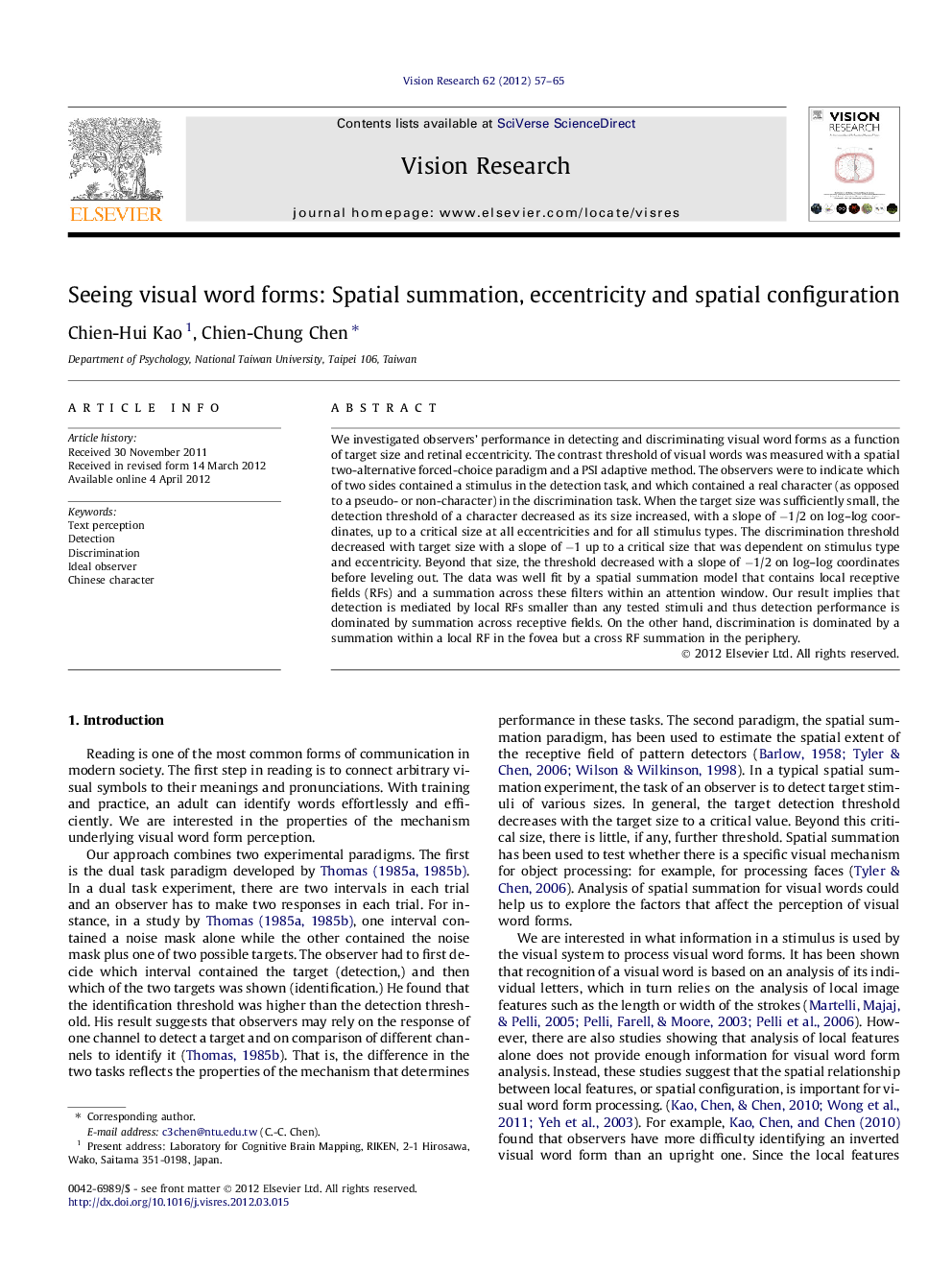| Article ID | Journal | Published Year | Pages | File Type |
|---|---|---|---|---|
| 6203681 | Vision Research | 2012 | 9 Pages |
We investigated observers' performance in detecting and discriminating visual word forms as a function of target size and retinal eccentricity. The contrast threshold of visual words was measured with a spatial two-alternative forced-choice paradigm and a PSI adaptive method. The observers were to indicate which of two sides contained a stimulus in the detection task, and which contained a real character (as opposed to a pseudo- or non-character) in the discrimination task. When the target size was sufficiently small, the detection threshold of a character decreased as its size increased, with a slope of â1/2 on log-log coordinates, up to a critical size at all eccentricities and for all stimulus types. The discrimination threshold decreased with target size with a slope of â1 up to a critical size that was dependent on stimulus type and eccentricity. Beyond that size, the threshold decreased with a slope of â1/2 on log-log coordinates before leveling out. The data was well fit by a spatial summation model that contains local receptive fields (RFs) and a summation across these filters within an attention window. Our result implies that detection is mediated by local RFs smaller than any tested stimuli and thus detection performance is dominated by summation across receptive fields. On the other hand, discrimination is dominated by a summation within a local RF in the fovea but a cross RF summation in the periphery.
⺠Detection thresholds were the same for all types of visual word stimuli. ⺠Discrimination threshold depended on stimulus type. ⺠The cortical magnification factor was smaller for discrimination than detection. ⺠A model implementing different spatial summation mechanisms fit the data well. ⺠Our results imply different levels of mechanisms in visual word form perception.
